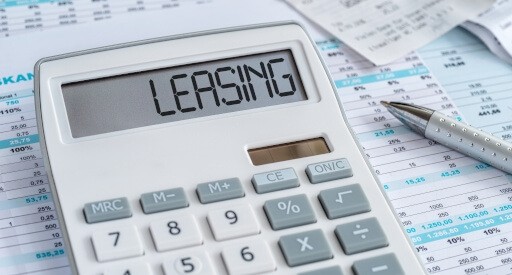Everyone is different. From a family of four hoping to rent long-term to a summer intern who requires temporary accommodations, everyone has unique housing circumstances to navigate. A landlord’s job is to prepare their property to appeal to their intended audience. Whether that audience includes short-term or long-term tenants, both options include a myriad of benefits for landlords.
But how can you decide which option is better when both seem to be the best?
Short-term vs. long-term rentals attract different candidates and offer diverse advantages. Before deciding to list your property, it’s essential to consider which type of tenants you would like to house, the resident turnover rate you would like to manage, and how the lengths of these lease contracts can affect your business
What is a short-term lease?
A short-term lease is a contract that lasts for less than six months. They offer temporary, convenient housing to transient, new, or non-resident tenants, and while short-term leases are rare, they accommodate a range of circumstances. Short-term leases often refer to:
-
Month-to-month leases - housing contracts renewed monthly until the tenant decides to end the lease.
-
Three-to-six-month leases – housing contracts that extend from a minimum of three months to a maximum of six months.
People who look for short-term leases are:
- Are temporarily visiting the local area
- Have recently relocated to the local area
- Hold temporary jobs or internship opportunities
- Are temporarily traveling/are temporary residents
- Require housing during their primary property’s renovation
Short-term leases offer tenants a “home away from home” without the pressure of a time commitment. From leasing a townhouse to summer interns to housing an immigrant awaiting a visa renewal, there is never a shortage of demand for short-term leases. For landlords hoping to host a multitude of tenants for short cycles, offering a short-term lease is a viable solution.
What are the pros of a short-term lease?
Short-term leases offer benefits to both landlords and tenants. They provide tenants with temporary housing and they allow landlords flexibility in managing their properties. With a short-term lease, landlords determine who rents their property, how much the tenants will pay, and how long they may stay. And the greatest benefit that short-term leases offer landlords? The choice to change their policies after each tenant.
Short-term leases offer huge flexibility for landlords, and the benefits of this flexibility include:
-
Greater earning potential – Tenants who require temporary housing pay for that convenience; thus, short-term leases are usually more expensive than long-term leases. Landlords who offer short-term leases can charge tenants a premium for base rent, and they can also adjust the rent following the termination of each lease contract. Because landlords may lease multiple contracts throughout the year, if they raise the rent each time—or for specific seasons such as summer—this may result in higher revenue overall.
-
Tenant turnover – Short-term rentals receive a multitude of tenants throughout a typical annual cycle. Thus, landlords of short-term rentals have the freedom to choose—or remove—tenants regularly. If you find your relationship with your tenant strained, you can feel at ease knowing that you can terminate your month-to-month lease at any time following the end of the month, and other short-term leases will expire sooner than long-term leases
The flexibility of a short-term lease is its greatest benefit. For tenants, short-term leases offer a convenient space for their temporary needs. For landlords, short-term leases promise a more significant earning potential, the option for tenant turnover, and the option for change if they are unsatisfied with either of the two.
What are the cons of a short-term lease?
While there are advantages to short-term leases, these temporary contracts also contain drawbacks. When deciding if short-term leases could benefit your property, first consider a short-term lease’s effect on:
-
Tenant screening – A high tenant turnover rate means more time spent on tenant screening. As a landlord, you’ll need to invest more time into properly screening each tenant’s personal and financial backgrounds. With a short-term lease, this means constantly screening tenants throughout the year. Screening may impede the speed at which you can lease your property and—if paying for background checks out of pocket—the amount in your bank account. Luckily, Apartments.com makes it easy to screen tenants, get the information you need, and find a qualified renter fast. Unlike our competitors, who use various third-party resources to collect information, we partner with TransUnion to provide you with screening reports for evictions, credit, and criminal history. Another feature you’ll find only on Apartments.com is support for co-signers, guarantors, and co-applicants. If you need more information to make a decision, you can request supporting documents from potential tenants directly on our platform. Get all the information you need to find the right tenant quickly and easily.
-
Fluctuating demand – Just as the popularity of a short-term lease rises in the summer season, its demand also has the potential to decrease throughout other parts of the year. Landlords must consider how this risk of vacancy could affect their finances when considering short-term leases. Fluctuating demand may result in inconsistent pay, as high demand for short-term leases in one season may result in zero demand during another.
-
Maintenance costs – The higher the tenant turnover rate, the greater potential for damage to your property. From a wobbly faucet to chipping paint, your property will likely sustain more damage—and require more maintenance—than properties on a long-term lease.
-
Furniture costs – Short-term leases often include furniture because of their suitability for short-term residents. To compete evenly with other short-term rental properties, you must furnish your home with the furniture and kitchenware that your resident may require throughout their short-term stay.
While a landlord’s benefits to short-term leases include higher earning potential and the flexibility to change tenants, these benefits may be offset by three things:
- The cost of maintenance and furniture
- The time-consuming tenant screening process
- The fluctuating demand for housing.
Before deciding on leasing your property as a short-term rental, consider both the pros and cons to see if this opportunity could work for you.
What is a long-term lease?
Long-term leases refer to housing contracts that extend from six to fifteen months. The twelve-month lease is the long-term lease most recognized standard by landlords and tenants alike. In general, long-term leases are most suited for tenants who:
- Work full-time in a specific community
- Are established residents of a specific community
- Require an extended stay in a specific community
Long-term leases offer extended housing to residents who are rooted within a community and do not plan to relocate soon. Whether tenants wish to relocate permanently or find a home base between times of frequent travel, long-term rental properties offer stability to tenants wanting to settle long-term and landlords hoping to host consistent tenants.
What are the pros of a long-term lease?
Long-term leases are the standard across the rental community for a reason. Their benefits include:
-
Consistent revenue – When tenants agree to a long-term lease contract, they agree to pay consistent rent for the time specified in the agreement. This means landlords will have a dependable source of income for an extended period.
-
Lower maintenance costs – With lower turnover comes less maintenance. Less maintenance means less time repairing damages and more money saved in your pocket.
-
Lower risk of vacancy – This directly relates to both the lower maintenance cost and consistent revenue benefits. Long-term leases promise to house tenants for the entire length of the contract. This ensures that you will receive a steady income, and your property will have tenants present to care for it.
What are the cons of a long-term lease?
As with anything, there are downsides to electing to lease your property in a long-term contract. Before extending a tenant a long-term lease contract, consider this lease’s impact on:
-
Tenant turnover – It's unlikely to encounter a tenant you wish to remove from your property—but the probability is never zero. If you choose this lease for your property, remember that a long-term lease is a binding contract for an extended period. You will not have the option to remove or turnover a tenant from the property unless they breach their contract—no matter how much you may wish to.
-
Lower rent prices – Since long-term lease contracts are the standard in the rental world, your prices must reflect competitively with the other rentals in your area. If prices are too high, renters may decide to rent elsewhere.
While minimal in number, the cons to long-term leases are still significant. If you elect to lease your property under a long-term contract, compare the prices of your property with competing properties and properly screen all applicants to ensure that your property attracts responsible tenants.
What is the best way to advertise my property as a short-term or long-term lease property?
Advertising your rental property is the first step toward securing a fruitful relationship with your future tenant. To ensure that your apartment listing reaches the best audience, align your listing to the peak seasons that attract the most tenants. The busiest season for rentals falls between May and September, and it is wise to market your property in alignment with the Spring and Summer demand.
To competitively advertise your property as a short-term rental, include keywords like “summer housing, temporary housing, or internship housing” in your listing. Many short-term renters also look for amenities such as furniture, televisions, central a/c and heat, a fully equipped kitchen, and in-unit washers and dryers. Include all pertinent amenities in your listing to showcase its ability to fully accommodate renters during their temporary stay.
To attract long-term tenants, showcase the unit and the surrounding area. For renters, a long-term leasing contract is an investment in the area where they live. Thus, it is best if landlords showcase all features of the apartments, the favorable details about the surrounding neighborhood, and the exciting locations nearby.
Frequently Asked Questions
Can I change my property from a short-term lease to a long-term lease?
Yes! Switching your property from a short-term rental to a long-term rental is easy, but first, there are a few steps to take. To convert your rental unit, refer to local landlord-tenant laws to ensure that your rental complies, update your rental to either add or remove necessary furniture and update your listing to reflect the qualities that will attract renters the most.
Can I charge more for a short-term lease vs. a long-term lease?
Yes. Short-term lease properties can charge more in rent than long-term properties. Short-term rentals offer the convenience of temporary housing, and tenants may pay for that convenience. Landlords also can raise the rent on their short-term rental after each temporary lease expires. Landlords usually cannot charge more for long-term rentals because of the necessity to compete with other listings
How will I know which type of lease is best for my property?
To determine which lease contract is the best, you must first consider how long a short-term rental is, how long a long-term rental is, and how they may affect your business. Research the rentals in your local area to determine if renter demand skews toward accommodating temporary or long-term residents. Then, refer to your financials to determine if your budget can handle the risk that short-term rentals bring.











